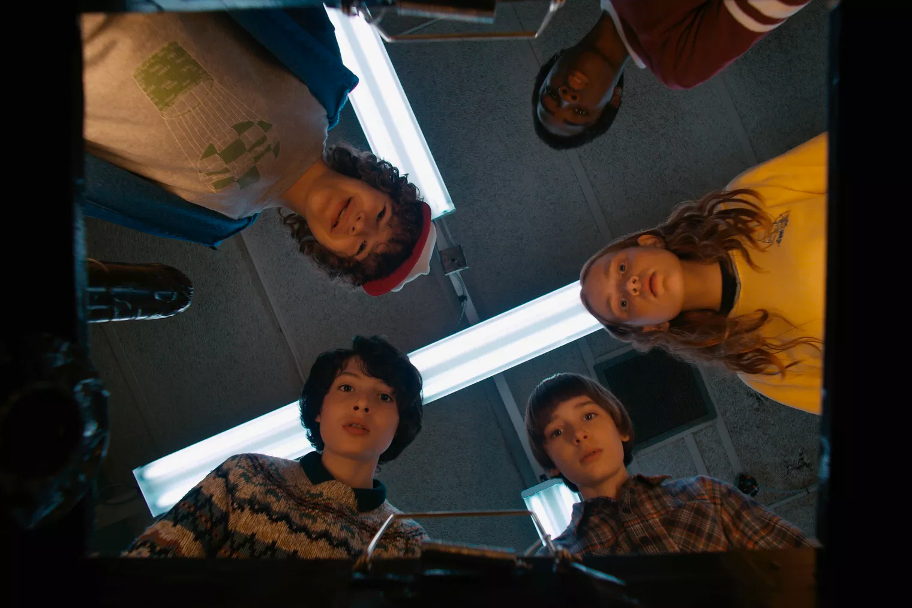Back when televisions were a luxury, families would gather in living rooms to watch TV together. Since then, times have changed and so has our consumption habits. Today, with streaming apps readily available on our smartphones, watching shows have mostly become an individual activity. Similarly, before Netflix became popular, people would visit the cinemas, rent Video Home System (VHS) tapes or DVDs, and watch whatever was showing on TV. Today, people can stream content instantly on any device, anytime and anywhere – thanks to the rise of disruptive streaming services like Netflix. Instead of paying for cable plans, more and more people are cutting the cord in favour of on-demand streaming services these days.
While a lot of streaming services have sprung up – Apple TV, Disney+, HBO, just to name a few – there’s no doubt that Netflix remains the dominant and largest subscription streaming service among its competitors. According to Forbes, the number of Netflix’s subscribers grows by approximately 10 per cent every year and as of the third quarter in 2020, it has about 195.15 million paid subscribers worldwide (Sources: Forbes & Statista). With the pandemic resulting in many people being cooped up in their homes, Netflix saw a surge in its subscribers count – 26 million new paid subscribers in the first two quarters of 2020 alone (Source: The Verge). Of course, with more viewers comes more revenue for the brand. Netflix noted that subscriptions drive its nearly $16 billion in annual revenue (Source: The New York Times). Besides raking in such huge numbers, Netflix has proven time and again that its shows have the ability to change consumer behaviour and propel product sales.

Just take a look at the recent hit on Netflix, The Queen’s Gambit. Thanks to this series, Chess is cool again. Since its launch in 23 October this year, it has attracted a staggering 62 million viewers – making it Netflix’s most watched scripted limited series. The Queen’s Gambit tells the tale of Beth Harmon, an orphan chess prodigy as she climbs through the chess ranks to emerge as the world’s greatest chess player, while grappling with issues such as substance abuse. Not only did the show pique renewed interest in the age-old game, it has also inspired a slew of discerning viewers to pick up chess – fuelling a stratospheric rise in sales for chess boards. In fact, inquiries for “chess sets” are also up by 250 per cent on eBay, and Google search queries for “how to play chess” has hit an all-time high in 9 years (Source: Income Fact). For one, the series demystifies a game everyone knows, but few actually can play, and even fewer can play well – creating just the kind of consumer curiosity gap that could lead to more sets being sold. It also benefited from great timing, as consumers were hunkered down at home amidst the pandemic and looking for new forms of at-home entertainment.
Broadly, this is what experts deem as the Netflix Effect. The ability to create original content, personalised recommendations for its users, influence changes in interests and shifts in lifestyles, and make its effect felt across other industries. Such, is the power of Netflix and its likes.
A Look at Netflix’s Content Strategy
A key success driver for this streaming powerhouse lies in its impeccable content strategy. Delving deeper into this, brands can take cues from Netflix’s content marketing ideas and implement them in their own strategies in a number of ways. Some of the most successful things that Netflix has done with its content marketing strategy include:
1. Create Original Content
In 2019, Netflix spent a total of 15.3 billion US dollars on video content, with over 80 per cent of that allocated to original content production (Source: Statista). In fact, it isn’t just about creating original content, Netflix is set on creating quality original content that cannot be found anywhere else. The success of their original content is much of what has allowed them to attract and retain viewers, especially with the rising competition in recent years. Some of the successful Netflix original series and movies include Orange is the New Black, To All the Boys I’ve Loved Before and more recently, The Queen’s Gambit.

Originality truly is crucial in any content strategy. Creating quality original content can solidify your brand’s credibility and enhance your brand’s image. Not only that, unique, original content also helps your brand cut through the noise and stand out in the world’s sea of content.
2. Release Timely Content
When it comes to releasing content, Netflix does it strategically as well. Take the popular Netflix original series, Stranger Things, for example. The company released all episodes of the highly-anticipated second season of Stranger Things on a Friday, just days before Halloween. The show’s scary theme was primed for a Halloween release and also timed to coincide with a popular time in which people binge-watch – the weekend.

The phrase “timing is everything” proves true once again for marketing. Brands can look more into timing and scheduling content releases such that they are tied to certain holidays or special events. It is also important for brands to pay attention to what is happening around the world so that you can sync your content releases with relevant current events. This helps to increase the relevance and timeliness of your content, so that it would resonate better with consumers.
3. Generate Interactive Content

Caught Black Mirror: Bandersnatch yet?
One of Netflix’s most popular yet disturbing thriller series, Black Mirror, illustrates the extreme effects of futuristic technologies in a dystopian world. Bandersnatch, its standalone film which was released in 2018, broke new grounds with its fresh, interactive video concept. By allowing viewers to click and choose which forked path the protagonist should take, people were hooked for as long as four hours on this film, continually attempting to navigate their way to a happy ending. While their efforts were oft time-consuming and futile, the enjoyment in trying still kept many viewers engaged.
From Bandersnatch’s example, we can see that fresh content is highly effective at helping brands to engage their audience and set them apart from their competitors. Thus, brands who truly think outside the box – in this case, in the form of interactive content – stand to gain a lot more attention. Through creating unique experiences that instigate interactions between your brand and consumers, this makes it more interesting for viewers, motivating them to further engage with your brand, potentially increasing conversions and generating sales.
Simply put, Netflix’s success can be attributed to its well-crafted content strategy. By continually coming up with innovative products and services, while keeping the pulse on what’s current, the brand effectively manages to develop strong relationships with its consumers and remain top of their game.
— —
Hero image: Forbes
